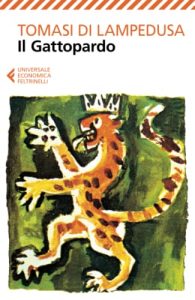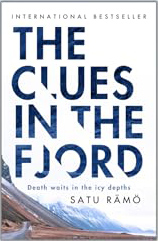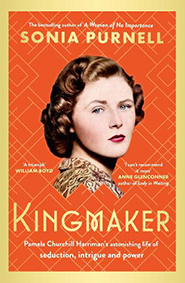Reviews by John Davis
The Leopard (Il Gattopardo) by Giuseppe Tomasi di Lapedusa

Although written in the 1950s, this novel concerns the unification of Italy in the middle of the nineteenth century and the way it effects one particular noble family in Sicily. It is regarded by some as one of the finest historical novels written in Italian.
The central character of the story, Don Fabrizio Corbera, is based on an actual ancestor of the author. He is known as The Leopard because of the animal depicted on his family crest. There are no actual leopards in Sicily, though there are creatures resembling the serval-a breed of wild cat.
The story traces the events that saw the transformation of Italy from a collection of independent kingdoms into a united country under one monarch.
In addition to Don Corbera there are prominent roles for his nephew, Tancredi Falconeri, his daughter Concetta and Angelica the child of the unscrupulous Don Calogero Sedara.
Woven into the plot are real life characters like Giuseppe Garibaldi. And no, he’s not a biscuit maker from just outside Rome, although he has given his name to the said confection which originated as quick and easily portable nourishment for his band of red-shirted guerilla fighters.
The novel is in many ways a two-part metaphor for developments that happened in Italy during this period. Firstly, it demonstrates how power gravitated towards the north of the country, especially around Turin and Milan, while Sicily, as an island deep in the south, came to be considered as almost a poor colony. Secondly, as the aristocracy lost wealth and influence, a new middle class emerged. It was made up of lawless and wealthy brigands and unprincipled ‘nouveau riche’ who, some would suggest, together formed the roots of the Cosa Nostra.
As Don Fabrizio astutely observes: “The lions and the leopards are gone and those who take our place are jackals and hyenas.”
Published by Penguin
Footnote: A film based on the book by Italian director Luchino Visconti was released in 1963 and a serialised version has recently appeared on Netflix.
The Thirty-Nine Steps by John Buchan

John Buchan is one of the old-school thriller writers to be classed alongside Conan Doyle, Chandler, Christie and Dorothy L. Sayers.
Not concerned with the set procedure of police operations, GPS tracking devices or clues found by hacking into electronic devices, his tales are more to do with fascinating characters, windswept locations and intriguing plot contortions.
Buchan (later known as Lord Tweedsmuir), was also an historian and a politician. Between 1935 and his death in 1940 he served as Governor General of Canada.
His ‘Bondesque’ central character in several novels is Richard Hannay, whose travels in this story take us from central London to the Scottish Lowlands and then to the Sussex coast.
It’s 1914 and Hannay is back in Britain after working abroad, He’s bored and looking for something to do. His wishes are duly obliged when he befriends an American writer/foreign correspondent named Scudder who soon ends up dead in Hannay’s apartment.
Scudder, it appears, was on to ‘something’ involving a Greek politician, naval secrets and several big-hitters in European affairs who seem to be spoiling for a war.
The next we know Hannay, complete with Scudder’s coded notebook, is on the run as his train journeys take him to the heather covered moors north of the border and back again, all with agents on his tail. What kind of organisation is The Black Stone? And what does the coded message “Thirty-Nine Steps. I counted them. 10-17 High Tide.” mean?
Published by Nielsen UK
Footnote: Richard Hannay has been played by at least four actors in film versions of this story. Robert Donat (Hitchcock’s version in 1935), Kenneth More (1953), Robert Powell (1978) and Rupert Penry-Jones (2008).
The Clues in the Fjord by Satu Ramo

Stieg Larsson, Henning Mankell and Jo Nesbo put the aptly named ‘Nordic noir’ into our homes in print long before television and film directors got hold of it.
In their thoroughly entertaining, though often dark, stories they did their best to put Sweden, Denmark and Norway on the crime map. If you thought though that Iceland might have got a raw deal, your worries are over.
Satu Ramo hails from Finland but since moving to Iceland as an exchange student has embraced the culture, literature and mythology of her adopted country. She claims this first novel is more ‘Nordic blue’ as it deals with important human issues and is not so bleak and cynical.
At the centre of the whodunnit is Hildur Runarsdottir, the only police detective working on the isolated west coast of Iceland. Personal problems and a traumatic past, two sisters went missing and her parents were killed in a road crash, have to be put to one side when a local man is found dead underneath an avalanche. The body count then continues to stack up. The deaths may be connected and perhaps the motive for them is hidden in that connection.
Some may find the pace rather slow and issues that are included, the way doors open there, the Icelandic wool industry and the country’s attitude towards police carrying guns, for example, seem somehow superfluous especially when they take precedence over unanswered questions in the plot.
However, if you like your mysteries with travel guide information thrown in for nothing, you are in luck. Oh, by the way, there don’t seem to be any ‘clues in the fjord’ or maybe I missed them?
Published by Zaffre
Footnote: For those who enjoy the novel, the follow-up The Grave in the Ice is due out this spring and a third tale, The Shadow of the Northern Lights, is planned for the autumn.
Kingmaker: Pamela Churchill Harriman’s Astonishing Life of Seduction, Intrigue and Power by Sonia Purnell (Virago 2024).
Review by Dr Paul Lashmar

From Winston Churchill’s confidant at No10 during the Blitz to Bill Clinton’s inner circle, Pamela Harriman was the woman that anyone who was anyone in the political elite of the West wanted to know and then have a good gossip about.
Pamela Beryl Digby was born in 1920. Her rise to fame and infamy began when she married, aged just 19, Randolph Churchill. She was to become a sounding board to his father, Prime Minister Winston Churchill, during the Second World War. Her notoriety sprung from her many affairs, one of which was with W. Averell Harriman, President Franklin Roosevelt’s special envoy to No10 in wartime Britain.
Five intensely lived decades later, while serving as the US ambassador to France, her life ended after suffering a cerebral haemorrhage as she took her morning dip in the Pool at the Paris Ritz. A dramatic end to a dramatic life. As one writer noted ‘Pamela would become one of the most influential, moneyed and talked-about women in postwar Anglo-American high society.’
Dorset.
What is not so widely known is that Pamela Digby grew up in rural Dorset, indeed within the Marshwood Vale Magazine’s publication area. She was a Digby from the aristocratic family who have been part of Dorset since the early 17th Century when they acquired Sherborne Castle. Later they bought Minterne House, in Minterne Magna, north of Cerne Abbas from the Churchill family.
By the turn of the 20th century Minterne House was riddled with dry rot and so the 10th Baron Digby had it demolished and built a new mansion influenced by the Arts and Craft movement. Anyone who has visited the open gardens there knows it is an eccentric edifice. The interior as with the exterior, as apparently the 10th Baron did not like bathrooms, thinking them as ‘dirty’ and so did not include any. (How the family managed this absence is not explained).
Pamela’s father, Edward, had been a Coldstream Guards officer in the First World War but was having financial difficulties. On elevation as 11th Baron Digby, he sold up the Belgravia house, the Irish estate and moved back to Minterne House. The Mintern estate had been reduced to 1500 acres from 40,000. A year after Edward’s marriage, Pamela was born and would be the first of five siblings.
The young Pamela made the best of Dorset country life and was especially keen on horse riding. When she was 12, she is said to have jumped her horse across the penis of the Cerne Abbas giant, exclaiming: “God, it’s big!” She was to retain an affection for Dorset even when she lived the high life in London, Paris, Turin, New York and Washington DC.
Clarissa Churchill recalled of the teenager that Pamela was “Fat and freckly with red hair and mad about horses.” And that; “We used to bully her.” At Minterne she was educated by governesses and never went to university, a loss of opportunity she was acutely aware through her life. “I was born in a world where a woman was totally controlled by men,” she later said. “The boys were allowed to go off to school. The girls were kept home, educated by governesses. That was the way things were.” As a debutante of the 1938 season, she did not stand out and received no marriage proposals.
Deprived of any chance of peerage by primogeniture—Minterne later went to her younger brother—she moved to London. There, she took a job at the Foreign Office as a translator, and she later told friends: “I felt a real country bumpkin”. In 1939, and still a teenager, Pamela met 28-year-old army officer Randolph Churchill, the son of Winston Churchill on a blind date. Convinced he was going to die on active service Randolph wanted to get married and have a male heir. He asked eight women in a week. Despite being warned by alarmed friends and family that he was feckless; she was the only date to take the offer seriously and agreed. And feckless Randolph was, as a heavy drinker, gambler, a man always short of ready money and something of a misogynist. Posted to Egypt by the army, Randolph had even managed to gamble away a large sum of money on the voyage, which he then expected Pamela to pay off.
With Randolph away at war, Winston and Clemmie Churchill took the pregnant Pamela under their wing. Winston Spencer Churchill was born October 1940 at Chequers. Now Prime Minister and a grandfather, Winston discovered that Pamela was a very intelligent woman, far more so than his son, and he took to dining with her in the evening at No10 to discuss the latest political turns of the war. This aspect of Pamela has only been highlighted in the most recent biographies.
A series of older men visiting No10 were entranced by her. She had something and, as the turn of phrase captures it, had blossomed. For the rest of her life, men found her enormously attractive. This proved very effective with the Americans that President Roosevelt sent over from the still neutral USA to see if Britain was worth aiding. Harry Hopkins was a keen admirer though nothing more. She had flings and affairs with some including Averell Harriman. Sonia Purnell’s engaging biography of Pamela claims that she was able to pass on key pieces of intelligence from her pillow talk with high rankling Americans that helped Churchill make well informed judgments about manipulating the American entry into the war. Purnell suggests Pamela played a part in getting the crucial Lend Lease agreement and the US declaring war. Apparently, Winston Churchill said she was her as “his most willing and committed secret weapon”.
At one-point mid-war, she was said to be sharing her nights between the head of the US bomber command and the British chief of air staff. Another amour was the legendary radio journalist Ed Murrow, whose live broadcasts from the London blitz across the US, are thought to have influenced the American people away from isolationism.
After D-Day the Mata Hari role lessened. From time to time, she returned to Minterne with the young Winston. With both spouses errant from early on, it was clear that her marriage was broken. Anxious to avoid scandal impacting on the Prime Minister during the war, Randolph and Pamela divorced after VJ Day on the grounds of his desertion. Even his father admitted Randolph was ‘useless’. She was still only 25.
The three times married Pamela had an untutored intelligence, honed as an autodidact. Her last husband was Averall Harriman, whom she married many decades after their affair. Combined with her refined charm and interest in politics, from the 1960s, she was a confidante to many Democrat politicians including JFK and Bill Clinton. Now known as Pamela Churchill Harriman, her Washington DC salons and fund raisers were where high politics were settled. Clinton was elected in 1992 and he later said of her part in his election, ‘Today I am here in no small measure because she was there.’
She did though, need to get away from the intensity of DC at weekends and bought herself a country house, as isolated as Minterne, in Westchester County. As Purnell notes she set about making the gardens as much like Dorset as she could.
However, says Purnell, ‘In defiance of Digby traditions she installed numerous contemporary bathrooms as well as shagpile carpets, one of America’s first microwave ovens and early remote-controlled television’.
Her long-time desire to have a high-powered public post was fulfilled at the age of 73 when President Clinton, who held her in high regard appointed the multilingual Pamela to be US Ambassador to France in 1993. She handled the post with aplomb. She died in post four years later.
Early biographical accounts were not very well disposed to Pamela, often settling scores. In a 2000 biography of Madeleine Albright, Harriman is cited in contrast to Albright, as a socialite who slept her way to the top. She was described by TV mogul William Paley, a former amour, as a compliment, “the 20th-century’s most influential courtesan”. As Rake magazine put it, Pamela ‘blazed a trail through the international scene of her era, enticing powerful men like moths to a particularly feisty flame.’
On buying ‘Kingmaker’, I expected not to like Pamela, but on reading Purnell’s generally sympathetic account I was intrigued by the power of her personality and her disdain of boredom. Nothing she did that caused so much backbiting, would have raised much of an eyebrow if she had been male. She had her faults and failures including neglect of her son Winston—who resented her and preferred his father—despite her attempts to bribe him with lavish gifts. She also mishandled the children of her later husbands and lovers who responded with public denunciations and lawsuits. Had she been a man, she would have undoubtedly risen to some higher office than ambassador and much earlier in her career.
It is nearly 50 years since her death, yet Pamela Churchill Harriman’s long journey from the Digby’s Minterne House to Clinton’s White House via No10 Downing Street, still makes for a gripping biography. Not a perfect life but a bloody interesting one.
Paul Lashmar is author of Drax of Drax Hall: How One British Family Got Rich (and Stayed Rich) from Sugar and Slavery. An unauthorised history of the Drax family. Pluto Publishers (2025).
He shares the shocking and, until now, untold story of Dorset’s own slave-owning dynasty. Drax of Drax Hall: How One British Family Got Rich (and Stayed Rich) from Sugar and Slavery. Pluto Press. At Waterstones bookshop, 45, 47 South Street, Dorchester. 18.00 on Thursday 5 June 2025.




